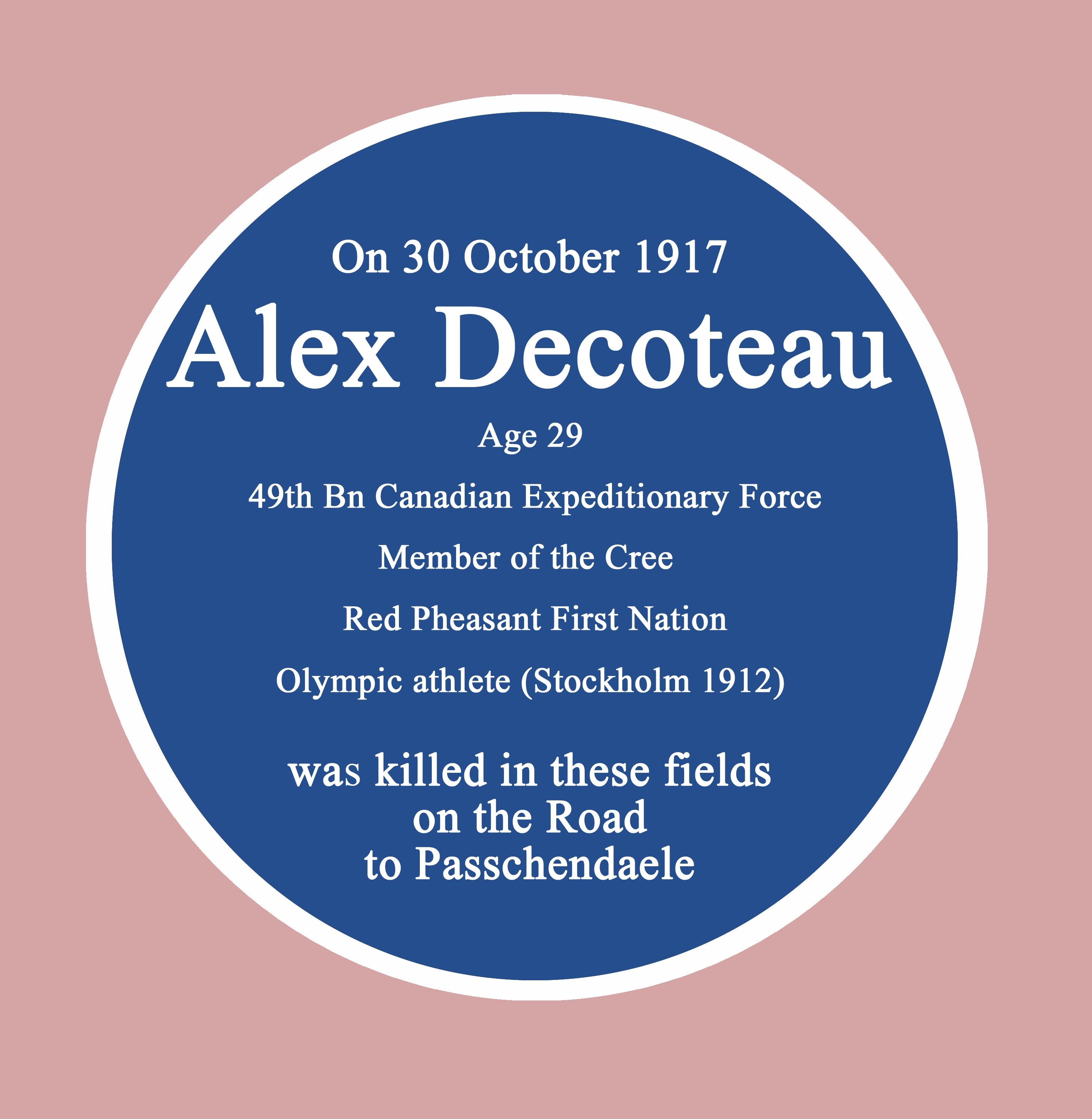
Red Pheasant Cree Nation veteran to be honoured in Belgium with commemorative plaque
On an autumn day at the end of October 1917, a soldier fell near the Passchendaele Ridge. Now, 107 years after a sniper’s bullet struck him down, Alexander Wuttunee Decoteau of Red Pheasant Cree Nation will be commemorated with a blue plaque in Flanders.
“We don’t know where exactly he was killed but we knew it within a few hundred metres,” said Erwin Ureel, committee member with the Passchendaele Society 1917 who spearheaded the project.
He explained that the blue plaque, which they are now working making and officially unveiled on Indigenous Veterans’ Day on Nov. 8, will stand along the road near the community that was the scene of one of Canada’s bloodiest battles. As people come to visit the battlefield, Ureel hopes that they look upon the plaque and will want to learn more.
“(They) will first of all learn a bit about Alex Decoteau but as important for me is that it will draw the attention to the visitors that there were indigenous people fighting in the area as well,” he said.



